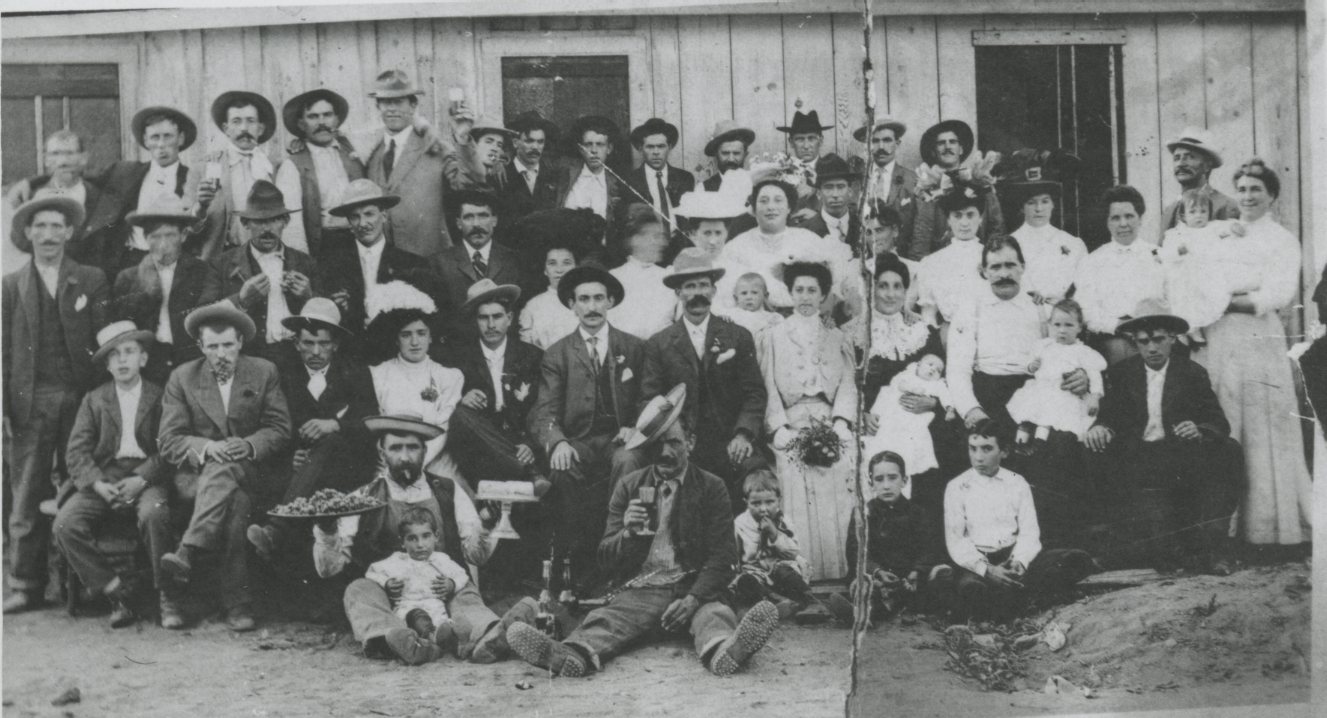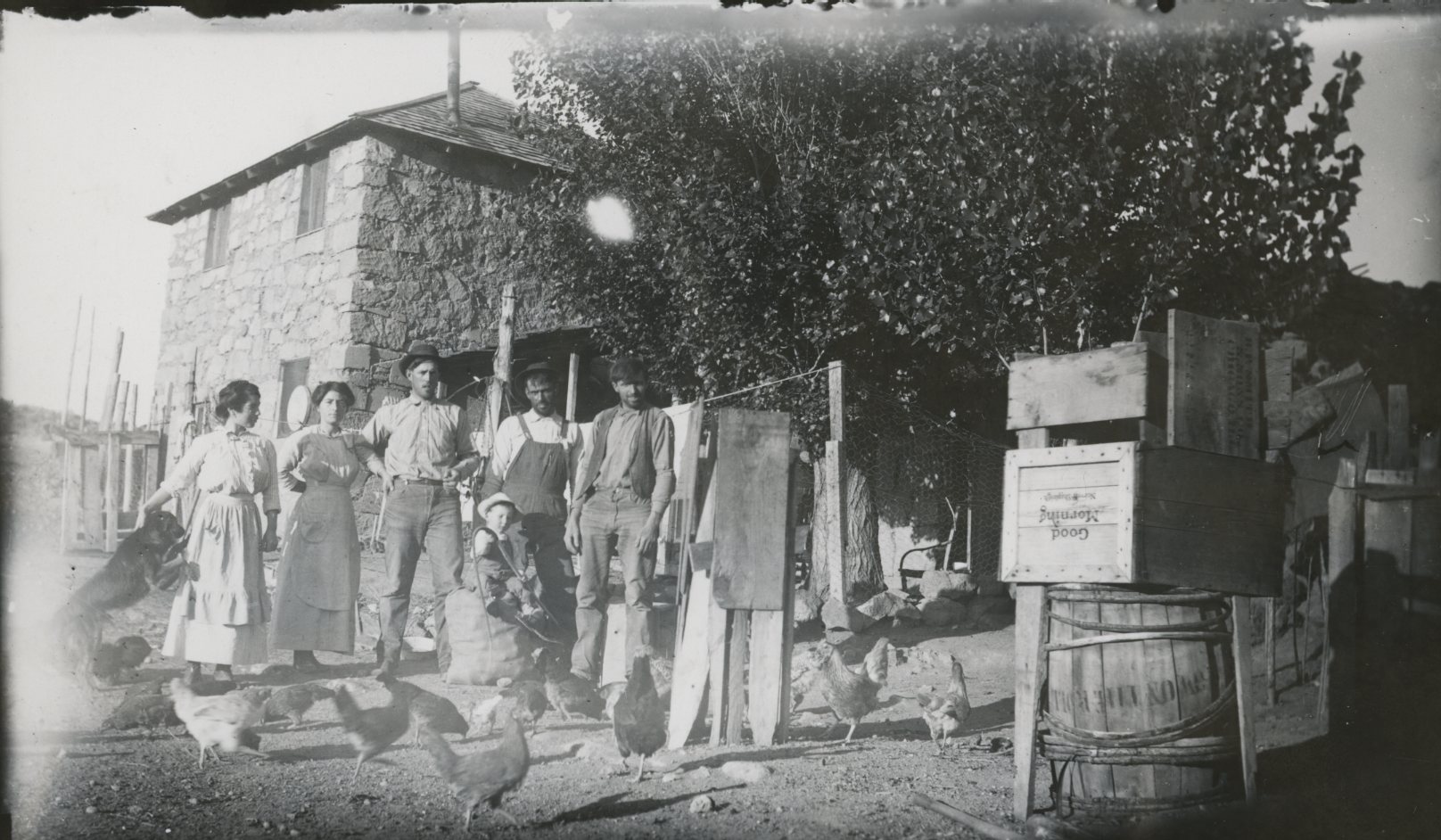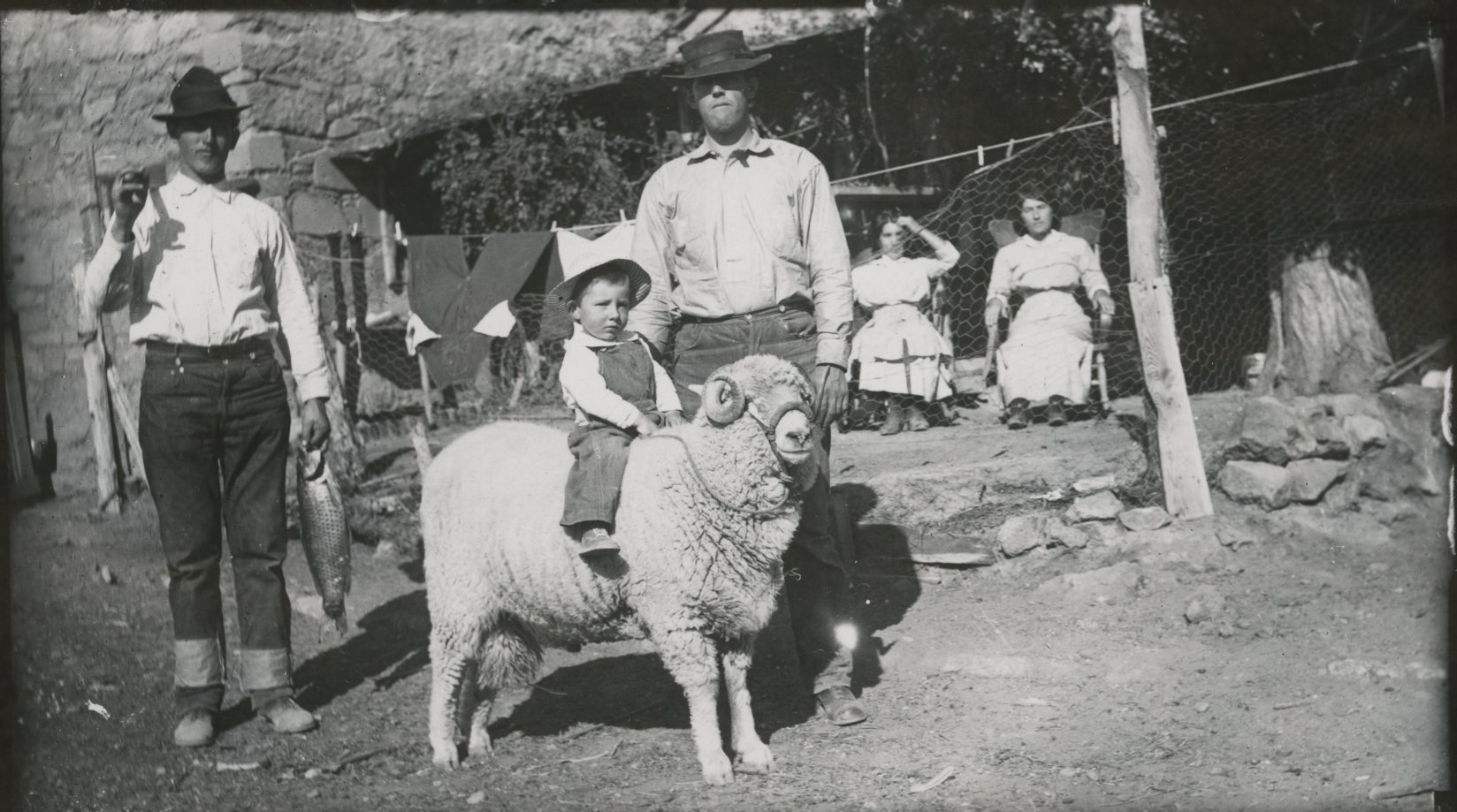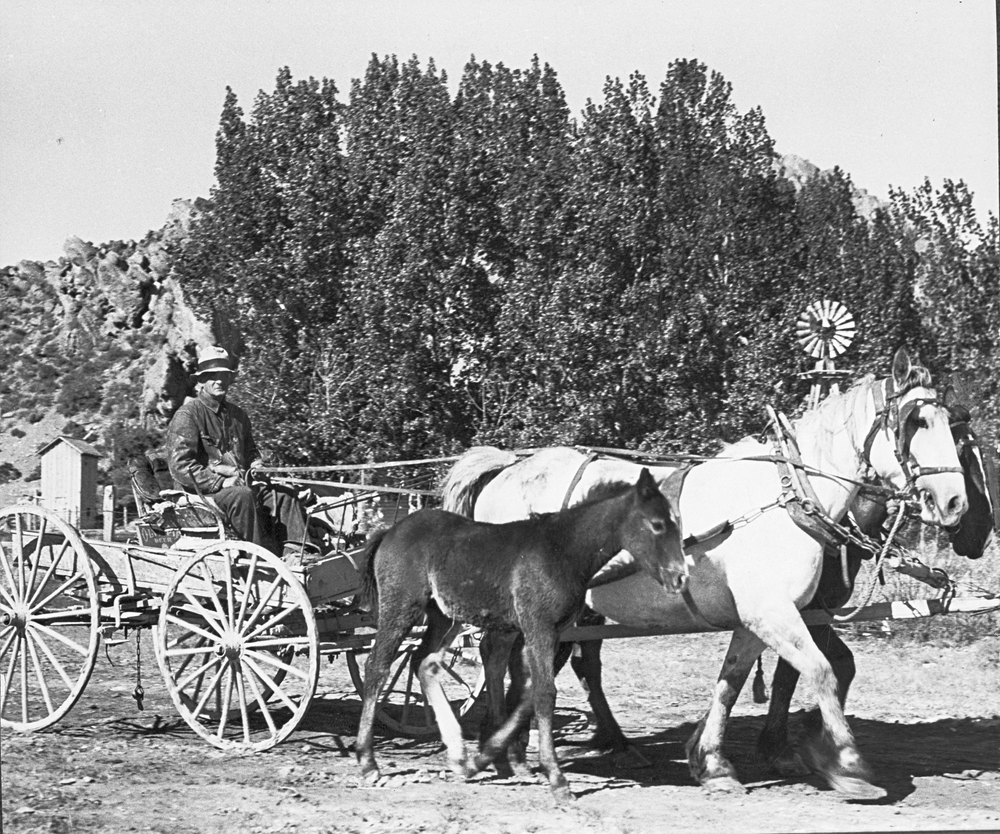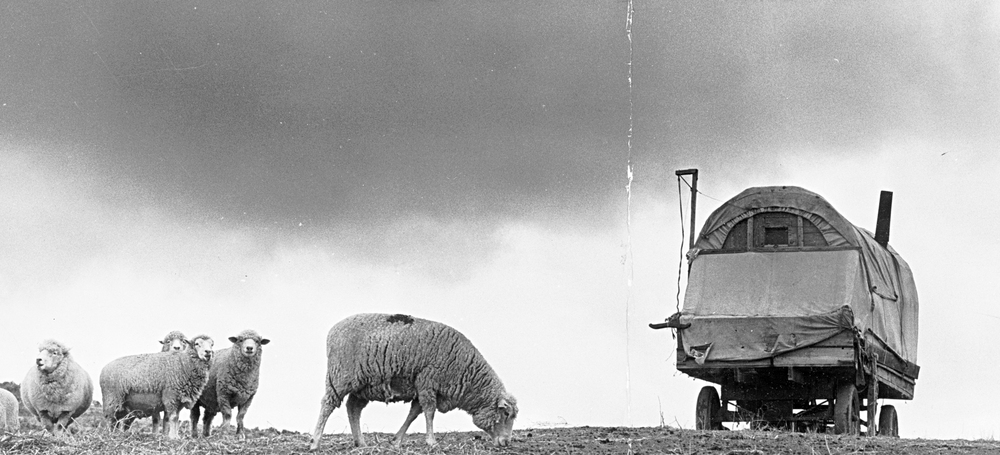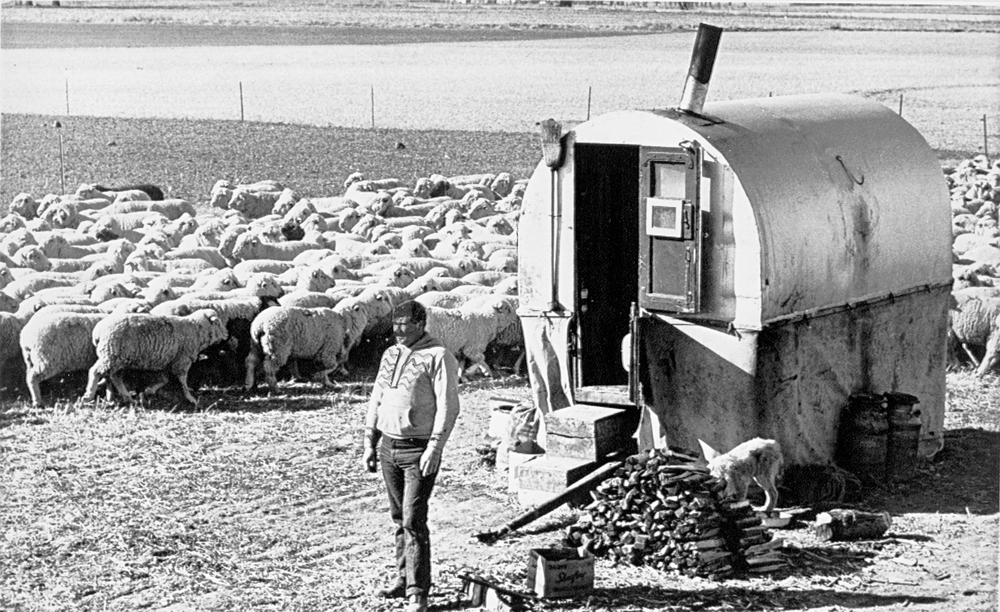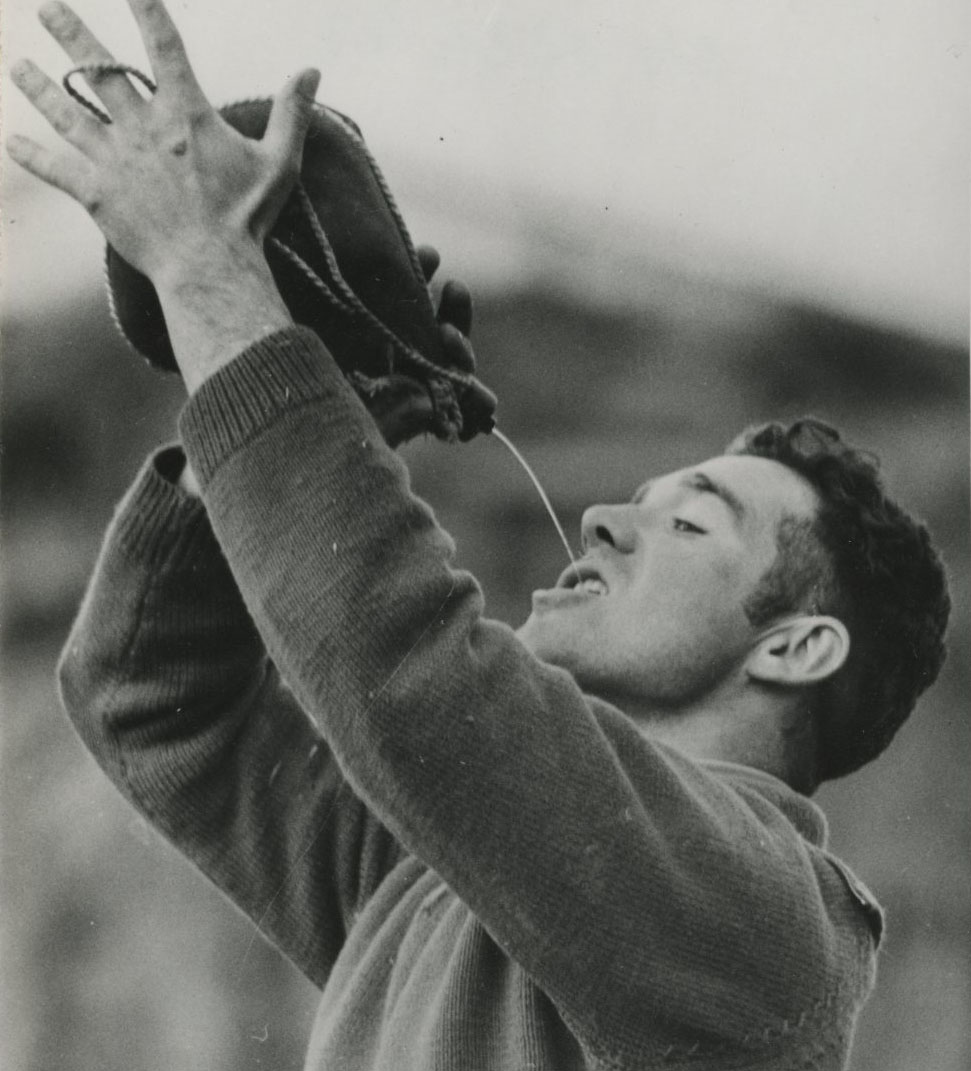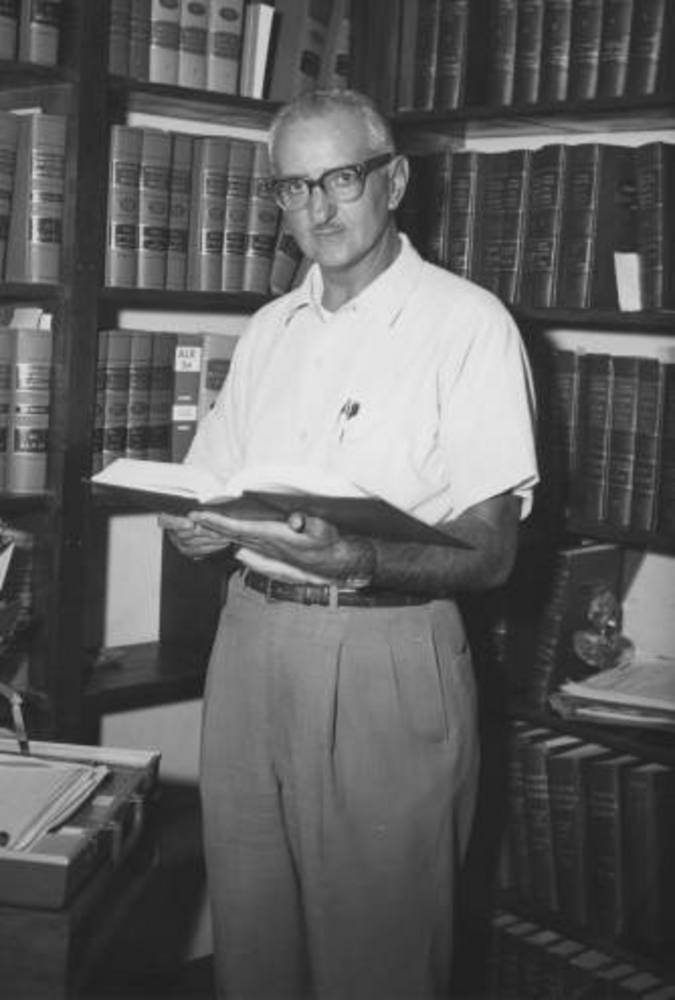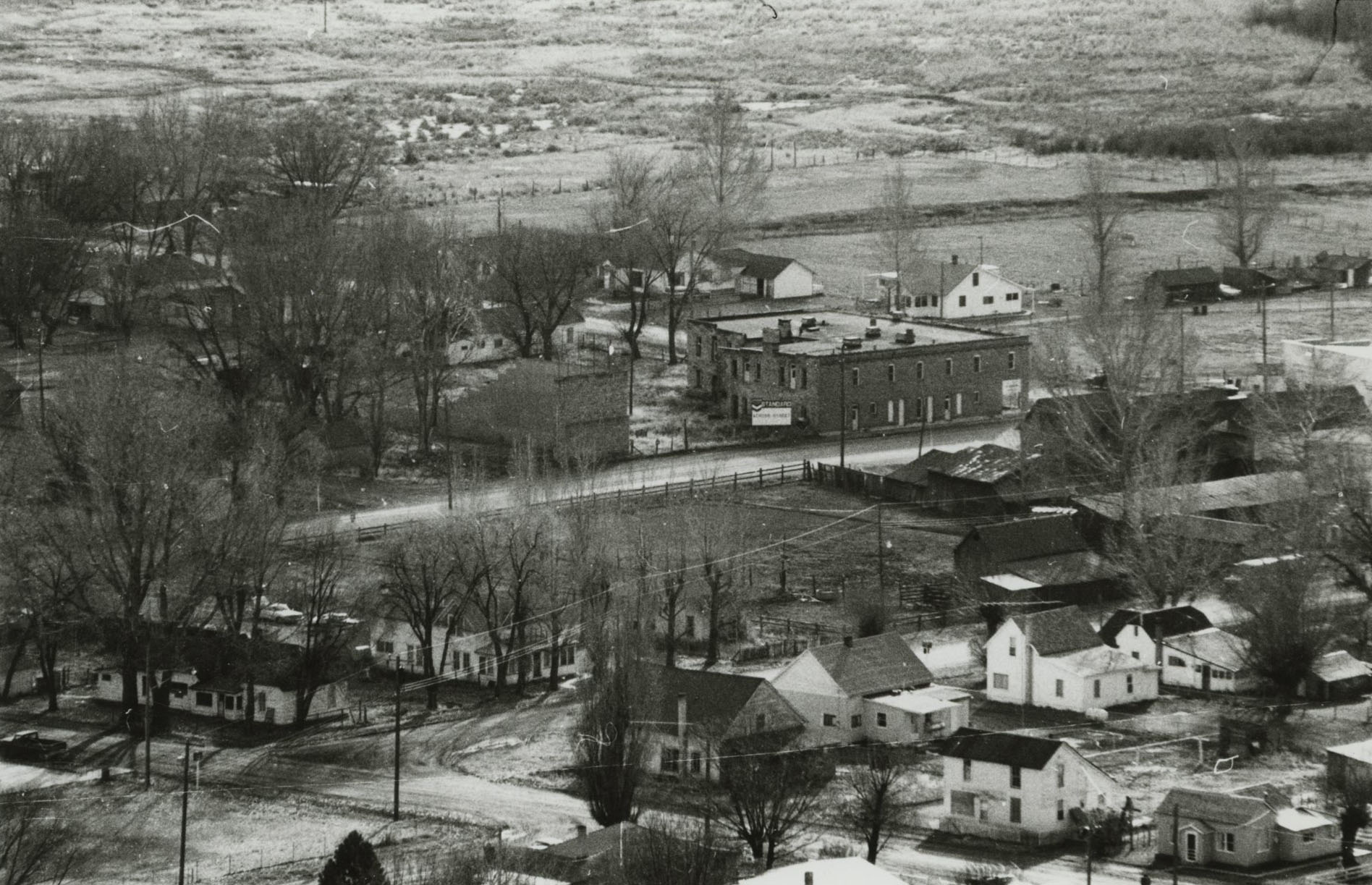The first Basques to Oregon arrived in the late 1880s. These Euskaldunak, or newcomers, usually migrated north and east from Nevada and California, often as sheepherders, and settled in the southeast corner of the state. The number of Basques continued to expand in eastern Oregon into the 1920s and 1930s, especially in the Jordan Valley, Steens Mountain, and Ontario areas, but after 1940 the influx of immigrant Basques rapidly declined.
By the end of the twentieth century, the Basque presence in Oregon had notably shifted, with the largest concentrations now living outside the eastern parts of the state and in or near western urban areas such as Portland. Known early on as sheepherders and livestock men, many Basques later moved into other occupations, while others remained farmers or ranchers. Over the past century, the Amerikanuak (American Basques) established their identity as a notable part of Oregon's sociocultural mosaic.
The pioneering Basques in Oregon came from two launching areas. Some were part of the Euskaldunak exodus out of Gold Rush California and the first ranches of Nevada. Others arrived directly from Europe, leaving the Pyrenees Mountains that separated France and Spain, crossing the Atlantic by ship, and traveling across the continent by railroad to their new western homes. The newcomers gradually became known for their tongue-twisting, non-European language; their roles as sheepherders; and their stubborn indarra, or fortitude. Some Euskaldunak slowly spread out from the Jordan Valley and Ontario regions, while others swarmed more quickly into the Boise, Nampa, and other areas in Idaho. Together, these Basque colonies in eastern Oregon, northern Nevada, and western Idaho became known as the "Nampa triangle."
In the community of Jordan Valley, Basque and non-Basque numbers expanded to approximately 600 families in the 1920s. The Basques established important markers of their ethnic presence by erecting several still-standing sandstone buildings, including three boarding houses, a fronton (for jai alai, pelota, or handball), and an essentially Basque-built Catholic church. For more than a century, the Jordan Valley community has remained the most-recognized—even if increasingly less populous—Basque settlement in eastern Oregon. Over time, symbols of an enduring Basque culture took root in the Jordan Valley, and a sign on Highway 95 passing through the area declared it the "Home of the Basques."
The two decades from 1920 to 1940 saw major developments in the Basque communities of Oregon. Basques settled in or near the small communities of McDermitt (on the Oregon-Nevada state line), Andrews, Fields, and Arock, maintaining connections with friends and families who often relocated to Euskaldunak communities in Idaho and Nevada. Besides working as herders or at other ranch jobs, some men secured work as miners or as laborers on irrigated farms. Estimates indicate that Basques probably made up more than half of the 1,000 to 2,000 residents of southeastern Oregon but may have been nearly 90 percent of the area's sheep men.
Challenges in the interwar years dramatically changed the character of the Amerikanuak presence in Oregon, as the Great Depression, immigration restriction, the Taylor Grazing Act, and assimilation processes took their toll. Economic hard times forced the Basques to cut their expenses, shrink their flocks, and do more of their own work. Simultaneously, falling quotas for Spanish and French immigrants lessened the number of herders available from the Old Country. When the New Deal Congress passed the Taylor Grazing Act in 1934, Basque livestock men who relied on public lands to graze their sheep immediately felt a sharp, restricting pinch.
On another issue, Prohibition, the Basques often broke the law, making moonshine and importing illegal liquors for their home tables and to serve at their boarding houses. When assimilating pressures undermined ethnic consciousness among second and third generation Amerikanuak, older Basques began sponsoring picnics, boarding-house gatherings, and other celebrations to keep Euskara (the Basque language), foodways, and other ethnic customs alive.
In the years following the early 1940s, Oregon Basques experienced continuing changes. The sheep industry, beset by international competition and diminishing demands for wool, fell on hard times. With the French and Spanish economies gradually recovering from postwar declines after World War II, fewer Basque men were willing to immigrate to the American West as poorly paid herders, isolated from European ties and removed for most of the year from other Basques. Lonely lives under the big western sky seemed less and less appealing. Because of its isolation and meager pay, herding also rarely beckoned suburban Americans. That meant Basques and other livestock men were forced to look elsewhere for shepherds. Ranchers began searching for their herders in Mexico, South America, and even countries such as Nepal.
Other shifts further transformed Oregon's Basques. From World War II forward, fewer and fewer Amerikanuak wanted to stay on isolated farms and ranches. After young Basques went away to college or entered the service, they rarely returned to take up their family's agricultural pursuits. Instead, they headed for towns such as Ontario, Bend, Burns, Boise, and Portland for greater occupational opportunities. Most of these migrants married non-Basques. A clear shift in demographic patterns was taking place, with increasing numbers of Basques moving from rural areas in eastern Oregon to larger adjacent towns or more distant cities.
The censuses of 1980, 1990, and 2000—which recorded 2,253, 2,257, and 2,627 Amerikanuak respectively—revealed that increasing numbers of Oregon's Basques had relocated to Boise and Portland. Two notable Basques of the post-1950 period made their mark in Oregon. Anthony Yturri, after graduating from the University of Oregon Law School and moving to Ontario, became a well-known lawyer and influential Oregon legislator. John Elorriaga became the CEO of the U.S. Bank and an important Oregon business leader.
At the opening of the twenty-first century, the images and realities surrounding Oregon's Basques were strikingly dissimilar. Sunday supplement newspaper stories and local lore, frozen in the past, often celebrated the state's Basques as sturdy herders and sheepmen. But the facts told a different story: most of the state's Amerikanuak had abandoned their ranches and farms to become city dwellers. Even while the rich and unique heritage of the Basques in Oregon sustained long-held beliefs, they were becoming more and more like other Oregonians.
-
![]()
Basque residents of Jordan Valley, c. 1914.
Courtesy Oregon Hist. Soc. Research Lib., 21730
-
![]()
Joe Navarro and Pascal Eiguren on their Owyhee Ranch, c. 1914.
Courtesy Oregon Hist. Soc. Research Lib., 23971, from Fred Eiguren
-
![]()
Basque residents, Jordan Valley.
Courtesy Oregon Hist. Soc. Research Lib., 38052, photo by Eiguren
-
![]()
Basques in the Jordan Valley.
Oreg. Hist. Soc. Research Library, bb003868
-
![]()
Amalia Elorriago and Juanita Zabala in tradiational Basque clothing, 1933.
Courtesy Oregon Hist. Soc. Research Lib., 48762
-
![]()
Sheep Grazing in the Jordan Valley.
Oreg. Hist. Soc. Research Library, bb003839
-
![]()
A Basque Sheepherder in the Jordan Valley.
Oreg. Hist. Soc. Research Library, bb003838
-
![]()
Domino Egana, Basque sheepherder in Jordan Valley, drinking from a Datskin pouch, 1966.
Courtesy Oregon Hist. Soc. Research Lib., 022692
Related Entries
-
![Anthony Yturri (1914–1999)]()
Anthony Yturri (1914–1999)
Anthony "Tony" Yturri, the son of Basque immigrants, served sixteen yea…
-
![Basque boardinghouses in Oregon]()
Basque boardinghouses in Oregon
Oregon’s earliest Basque settlers arrived in the late 1880s from northe…
-
![Jordan Valley]()
Jordan Valley
The town of Jordan Valley stretches along Highway 95 in Oregon’s High D…
-
![Pelota Fronton]()
Pelota Fronton
The pelota fronton in Jordan Valley is a handball court built by Basque…
Related Historical Records
Map This on the Oregon History WayFinder
The Oregon History Wayfinder is an interactive map that identifies significant places, people, and events in Oregon history.
Further Reading
Douglass, William A., and Jon Bilbao. Amerikanuak: Basques in the New World. Reno: U. of Nevada Press, 1975.
Etulain, Richard W. “Basque Beginnings in the Pacific Northwest.” Idaho Yesterdays 18 (Spring 1979): 26-32.
Etulain, Richard W. Basques of the Pacific Northwest. Pocatello: Idaho State University Press, 1991.
Zubiri, Nancy. Basque America: A Travel Guide to Families, Feasts, and Festivals. Reno: U. of Nevada Press, 1998.

